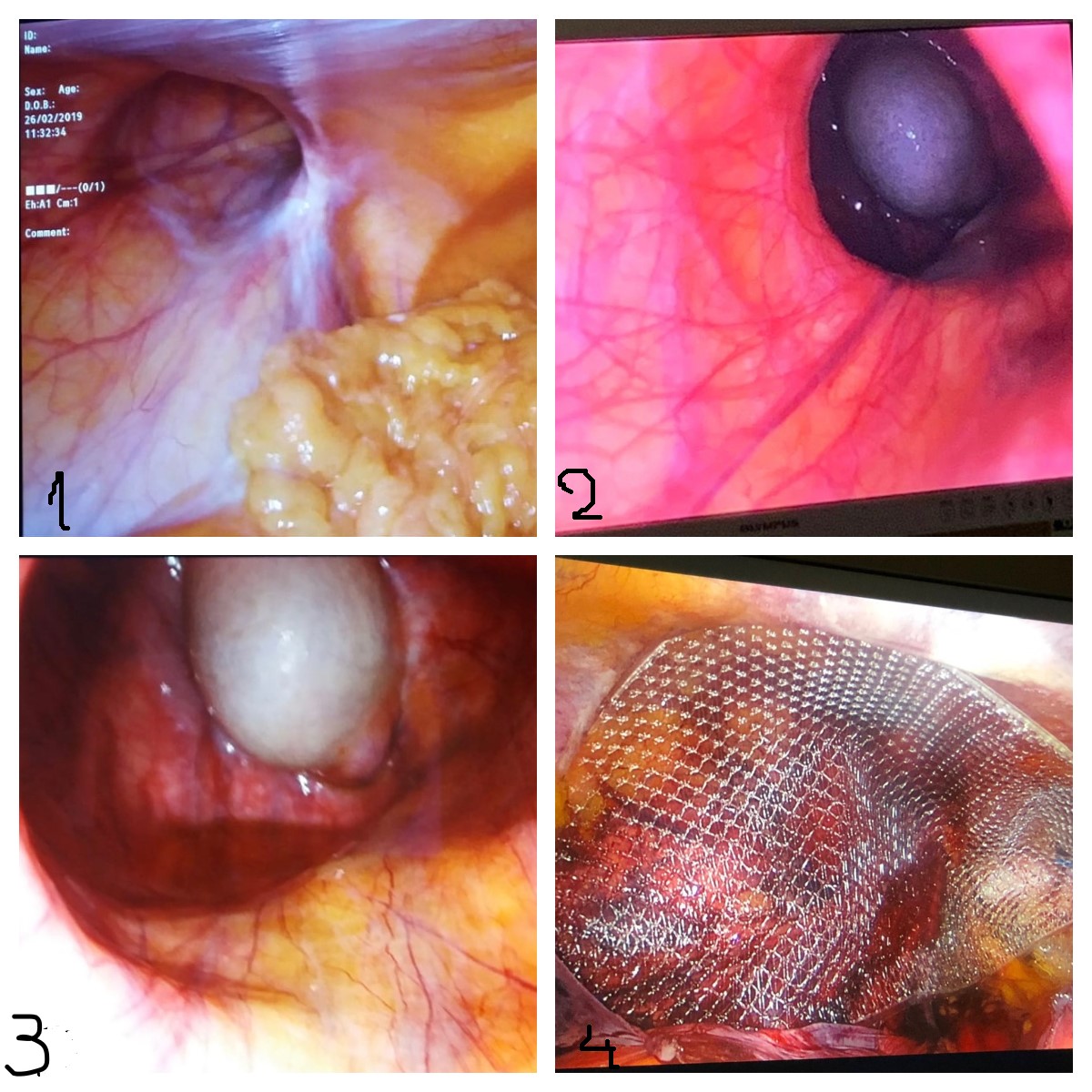TAPP technique for congenital inguinal hernia
Image Description
Laparoscopic hernia repair has opened a new era in hernia surgery shifting paradigms from anterior to posterior approaches. This has exposed surgeons to new anatomical perspective, tehnical challenges and clinical implication.
We present the case of a 53-year-old patient admitted to surgery in outpatient conditions with the diagnosis of bulky inguinal-scrotum hernia. Transabdominal pre-peritoneal (TAPP) repair was our option to solve the inguinal parietal defect.
Intraoperatively, in the peritoneal cavity, lateral to the epigastric vessels, the parietal flaccid defect was revealed, communicating with the right scrotum cavity, with clear evidence of testicle, suggestive of external congenital oblique hernia.
Peritoneal sectioning and take-off, with Cooper's, spermatic vessels and the relevant channel, were the precursors of the dissection and 360-degree take-off of the herniated sac, with the support of the herniated suture ligament, followed by in-line, and the abandonment of the distal, open, unbounded end.
The application of the 3D-MAX mesh, fixed with Capsure at the Cooper ligament, preperitoneal drainage and closure of the resorbable thread peritoneum were the endpoints of surgical intervention.
The postoperative progression was favorable with discharge on the 2nd postoperative day. Control at 30 days postoperatively did not identify possible complications, it presented without painful accusations, without suggestive elements for hydrocele and without signs of relapse.
The laparoscopic approach, even in the case of bulky parietal defects, remains a recommended treatment option with the best results, but largely depending on the surgical team experience.


